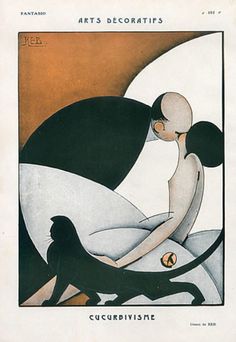Product Description
Raymond Subes / French Art Deco Wrought Iron Coffee Table c. 1935


Raymond Subes (1893-1970), France.
Coffee table, circa 1935.
Wrought iron, beige, ecru, and dark brown Afghanistan jasper top.
Related work illustrated: R. Subes, Ferronnerie Moderne (Paris: Editions Vincent, Fréal et Cie., n.d. [c. 1937]).
For more information see: Art Deco, Victor Arwas, (New York: Harry N. Abrams, Inc., 1980) p. 305; Encyclopedia of Art Deco, ed. Alastair Duncan, (New York: E.P. Dutton, 1988.) p. 152, 167.
H: 19 1/3” x D: 35 1/2”
Price: $38,000
During the 1930s, Raymond Subes became one of the foremost designers of wrought iron in his native Paris. Subes studied at the Ecole Boulle and the Ecole des Arts Décoratifs before going to work for Emile Robert, a leading ironwork designer. He later became the artistic director of Borderel et Robert. At this venerable firm he created iron grills and doors for architectural commissions, many of which may still be seen all over Paris. His work was exhibited at the Paris 1925 Exhibition of Decorative Arts and he designed the wrought ironwork for the ill-fated ocean liner the Normandie. Subes’ early work was ornate and naturalistic, but gradually became more geometric and linear. This Art Deco table is a particularly lyrical example of his mature style, with its gracefully scrolling iron legs.
Raymond Subes / French Art Deco Wrought Iron Coffee Table c. 1935
You must be logged in to post a comment.
JEAN E. PUIFORCAT (1897-1945) France
ORFÈVRERIE PUIFORCAT Paris, France
Sterling silver with sterling and bone gear-like finial detail
Marks: JEAN E. PUIFORCAT, French Guarantee mark for 950/1000 pure silver, E.P. insignia (Emile Puiforcat)
For related works of Puiforcat see: Jean Puiforcat, Françoise de Bonneville (Paris: Editions du Regard, 1986) p.171; Jean Puiforcat: Orfèvre Sculpteur (Paris: Flammarion,1951).
H: 3 1/4″ x Dia: 3 1/2″
Jean E. Puiforcat is the most famous name of Art Deco silverwork. This is a gently tapered round footed and covered box of beautiful form and proportion with a contoured gear-like bone and silver finial. Overall it is a signature example of French Art Deco silver and dates from the late 1920’s and bears the early mark of Jean E. Puiforcat spelled out in addition to all of the appropriate French silver standard touchmarks. It is a really perfect example of French Art Deco silver by the French master of them all, Puiforcat!

Reviews
There are no reviews yet, would you like to submit yours?